To say Jordan has a lot of history is a colossal understatement. From Holy Land sites to Roman ruins and the Nabatean wonders of Petra, the country offers a wealth of fantastic sights for history buffs. Add in the desert landscapes of Wadi Rum and you have a destination that packs a serious punch.
Ironically, I wasn’t even supposed to go. My original plan was to visit Uzbekistan from Turkey, but mandatory two-week arrival quarantines were still in place. With a gap in my travel timetable, I looked for an alternative and Jordan fit the bill. An eight-day tour with G-Adventures fit my dates and, most importantly, the country was open. Sold!
Amman
Clearing customs and luggage retrieved, I arranged a transfer to my hotel in Amman’s old city. Sprawled across a succession of hills and valleys, the Jordanian capital is one giant stairmaster. Feeling ambitious, I zig-zagged my way up to Amman’s Citadel.
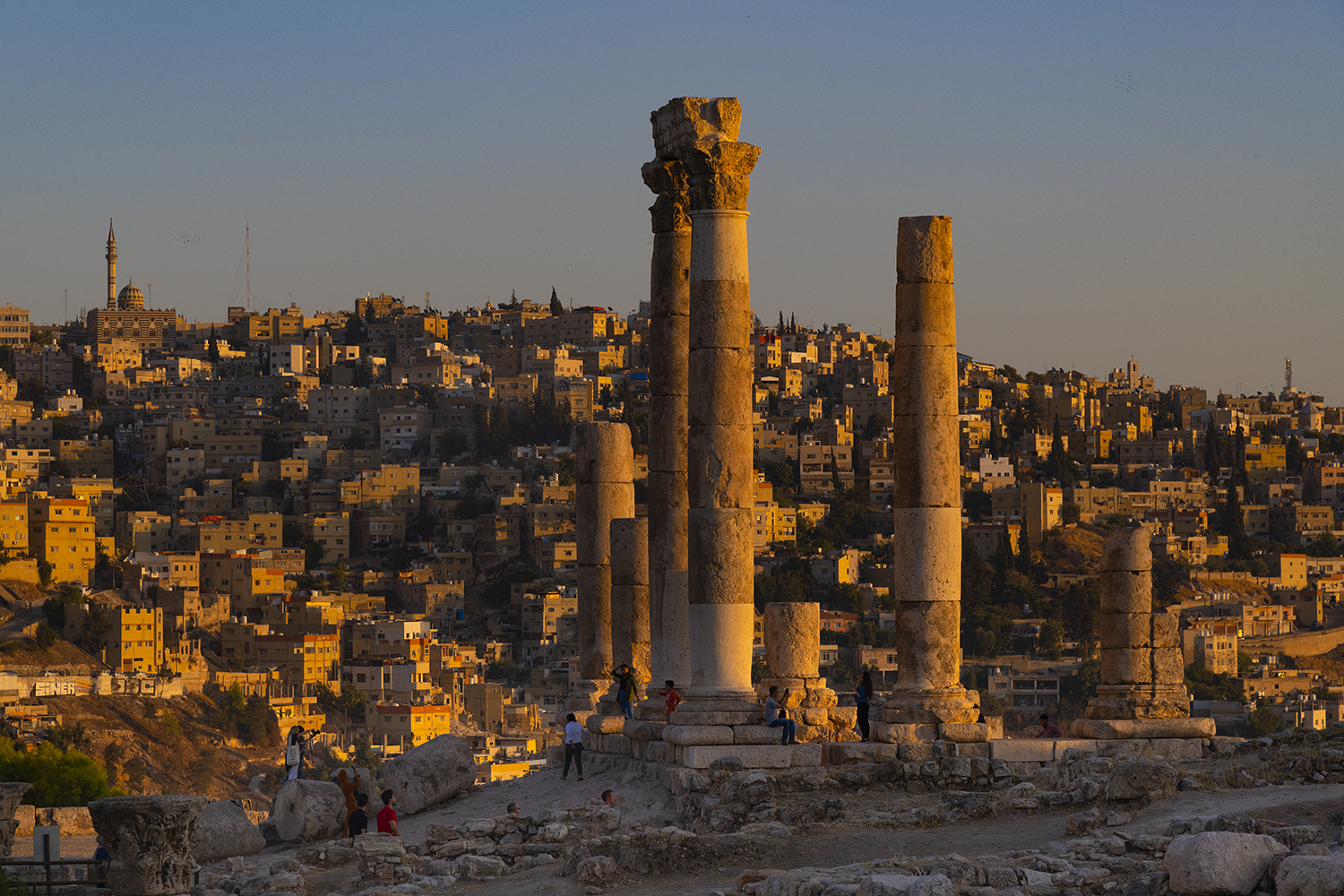
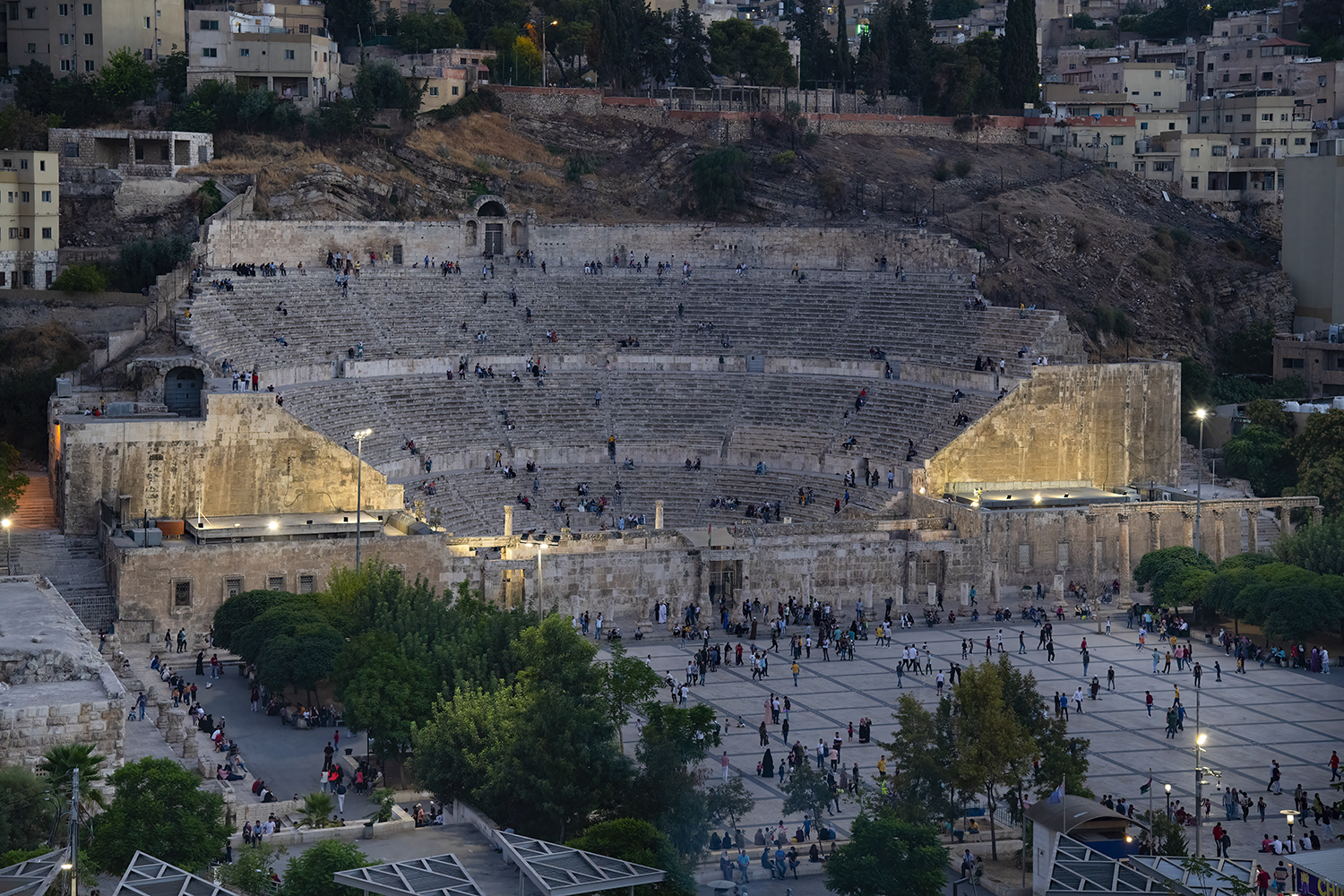
Opposite the Citadel is the Roman amphitheatre. Hewn right into the hillside, the 6,000-seat theatre is still used for concerts. Heights aren’t my favourite thing, but I set out for the top. The steps were precipitous, and with nary a guardrail in sight, I halted at the second of the three tiers. The views were spectacular but then came the worst part: going back down. I’m certain my snail-paced progress must have amused onlookers, but I made it with bones intact.
Occupied since the Bronze Age, the Citadel has the mark of many great civilisations, with a treasure trove of ruins still being excavated. Most structures date from the Roman, Byzantine, and Umayyad periods, creating a microcosm of Jordanian history. The views were equally astonishing – the city burnished amber by sunset’s glow.
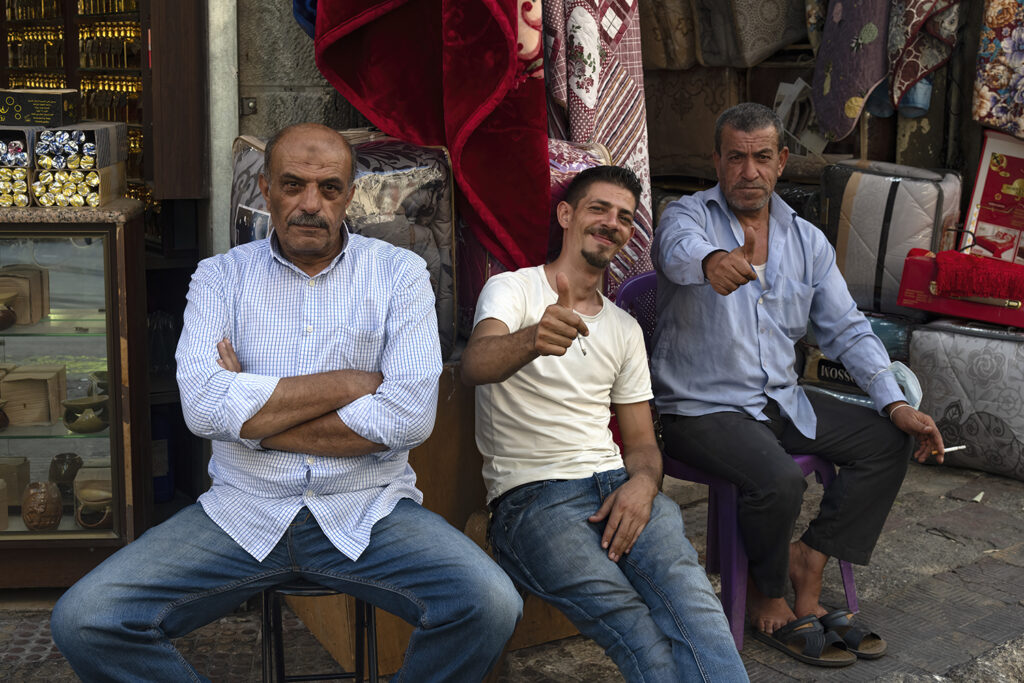
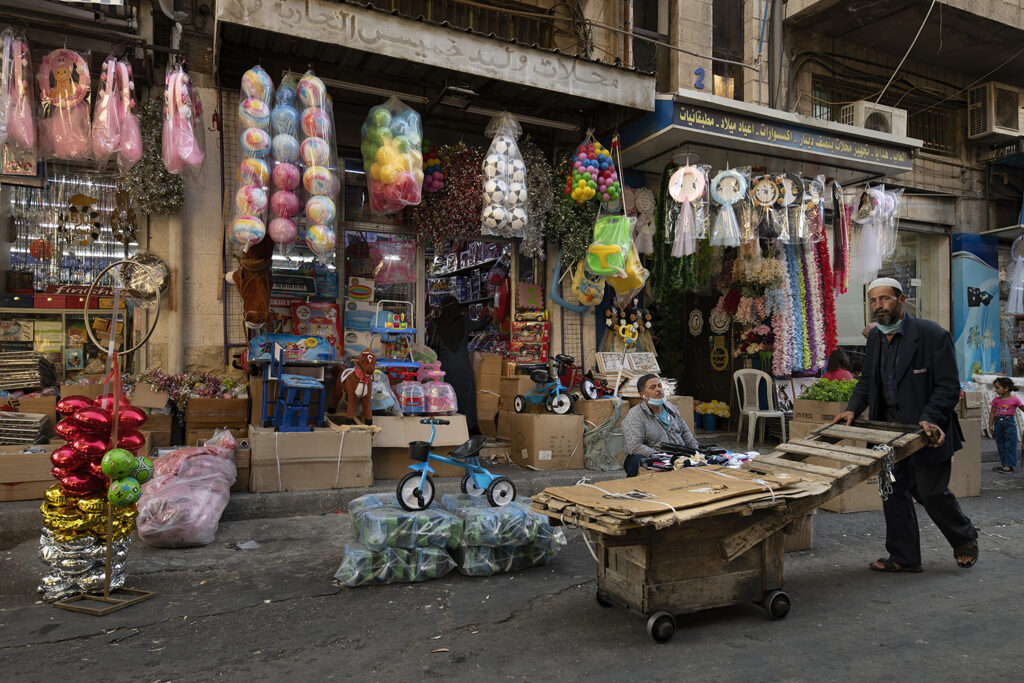
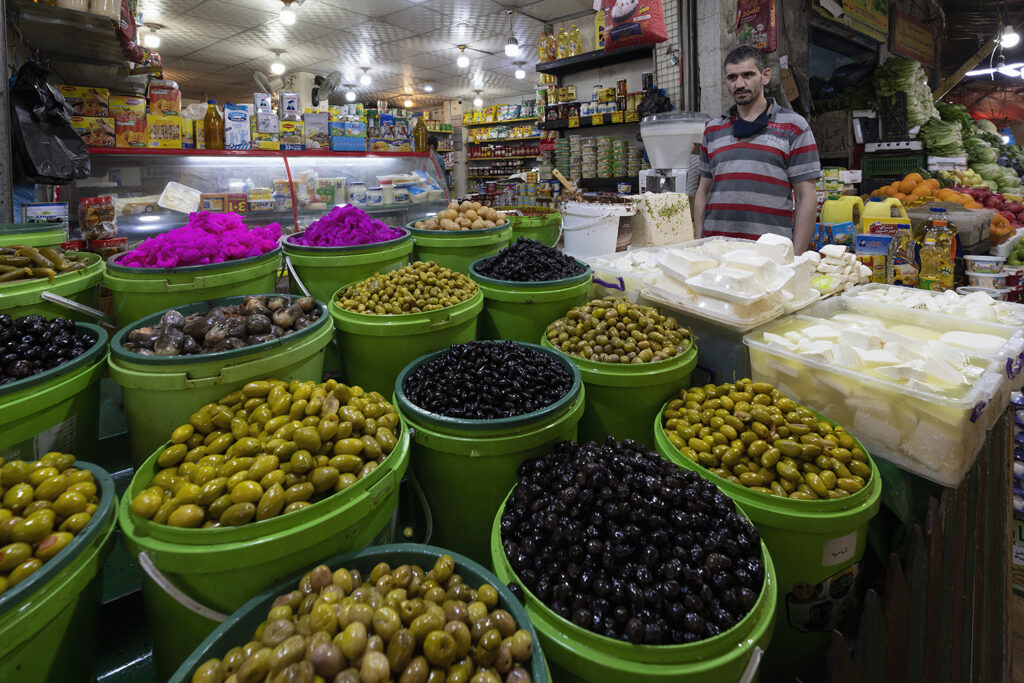
Heading back to my hotel, a side-street detour revealed an extensive market encompassing a number of blocks. The scene was electric, as shoppers perused the labyrinth of stalls offering everything from fruit and veg to nuts, buckets of olives, trays of baklava and freshly baked flatbread. People obligingly posed for photos, accompanied by a jovial ‘Welcome to Jordan!’ It was now official; Jordan had me smitten.
Into the desert
The next morning, I began my tour proper – joining a group of five, led by guide Husam. We were all thrilled to be there, but none more so than Husam – this being his first tour since the pandemic began. We bid Amman farewell and headed south for the 5-hour trip to Wadi Rum. After checking in at the virtually deserted visitor centre to sort our park passes, we hopped in a pair of 44x4s to continue our journey. In the wilderness, the desert is the road !
Wadi Rum is the embodiment of desert, a wondrous landscape of immense rocky outcrops pockmarked by eons of wind and erosion. Movie buffs will recognise it from the likes of Star Wars, The Martian and most recently Dune, but it is most irrevocably entwined with Lawrence of Arabia, not only as the filming location but as the site of the actual historical events.
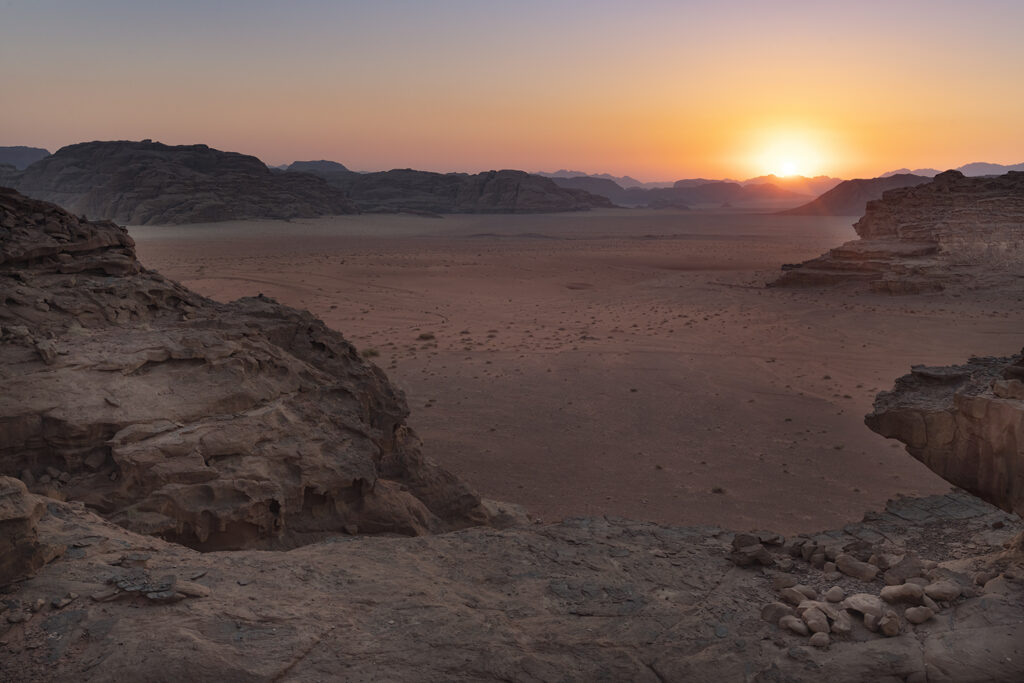
We spent the remainder of the afternoon exploring en route to our camp. I was surprised just how many camps there were, but the majority lay empty due to reduced tourist numbers. But Bedouin hospitality was never far away. Stopping for a tea break, I was shown a photo of T E Lawrence. The view behind him was the very one facing me, unchanged in more than a century.
Finally reaching camp, we had time for a short rest before heading to a nearby overlook for sunset. Glorious in hues of red and orange, the landscape was ours to savour in magnificent solitude.
Dinner was a Bedouin specialty I couldn’t wait to sample. Zarb featured chicken and vegetables cooked underground – essentially the Bedouin equivalent of a pit barbecue. The results proved meltingly tender and utterly delicious. After Amman’s bustle, Wadi Rum’s silence was deafening. Trying to sleep was like being in a vacuum, with the only sound my own heartbeat.
The next day I arose before sunrise, marvelling at the waking landscape. Towering cliffs stood like sentinels, eerily silent in the still morning air. Later in the day, I ventured to another sunset location on my own – but upon arrival, I was dismayed to see other people there! A grand total of four. But my annoyance soon turned to gratitude, as a couple of ladies offered me a ride back to camp.
A world-famous icon
Our next stop was a destination that had long been on my bucket list. Located in the town of Wadi Musa (Moses Valley), Petra is iconic as it gets. Named one of the New Seven Wonders of the World, Jordan’s premier attraction is regarded as one of the world’s greatest archaeological sites.
Capital of the Nabataean empire between 400BC and AD106, the city occupied a prime trade-route location, resulting in fabulous wealth. Conquered by the Romans and damaged by a massive earthquake, the city was eventually abandoned in the 12th century and forgotten to time. Rediscovered in 1821, its fame was clinched as the abode of the Holy Grail in Indiana Jones and the Last Crusade. And for those that deem it essential, bullwhips and fedoras are available at an on-site gift shop…


From the main entrance, it is approximately a 2km walk to the end of the Siq – the narrow canyon that leads to Petra. The first kilometre is an exposed trail, and the final kilometre within the canyon itself. En route, souvenir stalls offered wares of highly dubious historical authenticity. Approaching one, I stopped in my tracks; the vendor was none other than Captain Jack Sparrow, complete with eyeliner, bandana and braided beard!
Husam explained the character’s look was inspired by the Bedul Bedouins, a local tribe that are cousins of the Bedouin. Numbering only around 1,000, they once lived in caves throughout the site but were resettled in 1985 when Petra received World Heritage status. There were plenty of Captain Jacks about, hawking Roman coins or tempting passers by with camel or horse rides.
At the end of the Siq lies one of the world’s greatest reveals. Through a narrow cleft at the canyon’s entrance, the iconic façade of the Treasury comes into glorious view. Sculpted right from the cliff face, it is little more than a façade. But what a façade it is.
A crowd of around 100 people was present – the most tourists I’d seen since arriving. According to Husam, though, up to 5,000 people a day would visit before Covid. Still, the tourists seated in front dashed hopes of an unobstructed photo. Off to the left, a trail ascended precariously to the cliff top, offering a bird’s-eye view of the Treasury. Husam advised against it. ‘It’s not safe’, he cautioned. No objections from me.
Sticking to ground level, we continued past the Treasury through another narrow canyon to the wonders beyond. Most people think Petra is merely the Treasury, but the site is vast, featuring an extraordinary array of historical attractions dating from both Nabatean and Roman times. According to Husam, it would take a week to see everything. Strangely, most of the site was uncrowded. Most visitors come for their Treasury selfie and leave, oblivious to the marvels beyond.
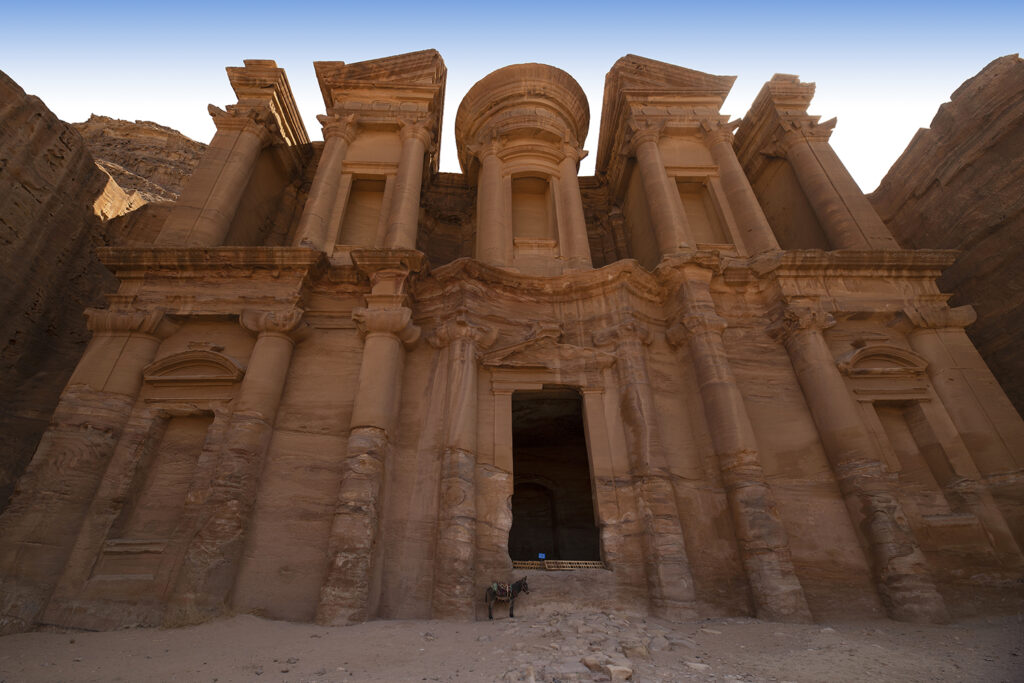
From a Nabatean amphitheatre and royal tombs to cave dwellings and Roman temples, Petra proved overwhelming and sent my camera into overdrive. A But a second day allowed us to explore on our own. Our group decided to tackle the hike to another of Petra’s famous sights: the Monastery, a gruelling trek of 1,800 steps. And that’s not including the 3km walk just to get to them! To avoid the heat, we opted for an early start, arriving at the Treasury before 08.00. Apart from a few Bedul, the site was deserted. After stopping for photos, we pushed on for another kilometre to the stairs and started our ascent.
En route were more souvenir stalls, though most hadn’t opened yet. But there was always tea. At one rest stop, we were served a cuppa by some gracious Bedul ladies, while at another, we were surrounded by a gaggle of friendly cats (not serving tea). Finally, we made it to the top and the exertion was more than worth it. The Monastery’s immense façade was even bigger than the Treasury and we had the entire place to ourselves. It turned out there was a viewpoint higher up, but the heat was too much – I collapsed on the couch of a nearby shop to enjoy some freshly squeezed pomegranate juice.
Trudging back down, we passed sunbaked hikers weary in the burgeoning heat. ‘Is it far?’, they queried with pleading expressions. On the way back, we took an alternate route to see the four Royal Tombs, a series of large rock-hewn mausoleums. One featured a cavernous interior carved out of the solid rock, wondrous with swathes of pink, orange and white.
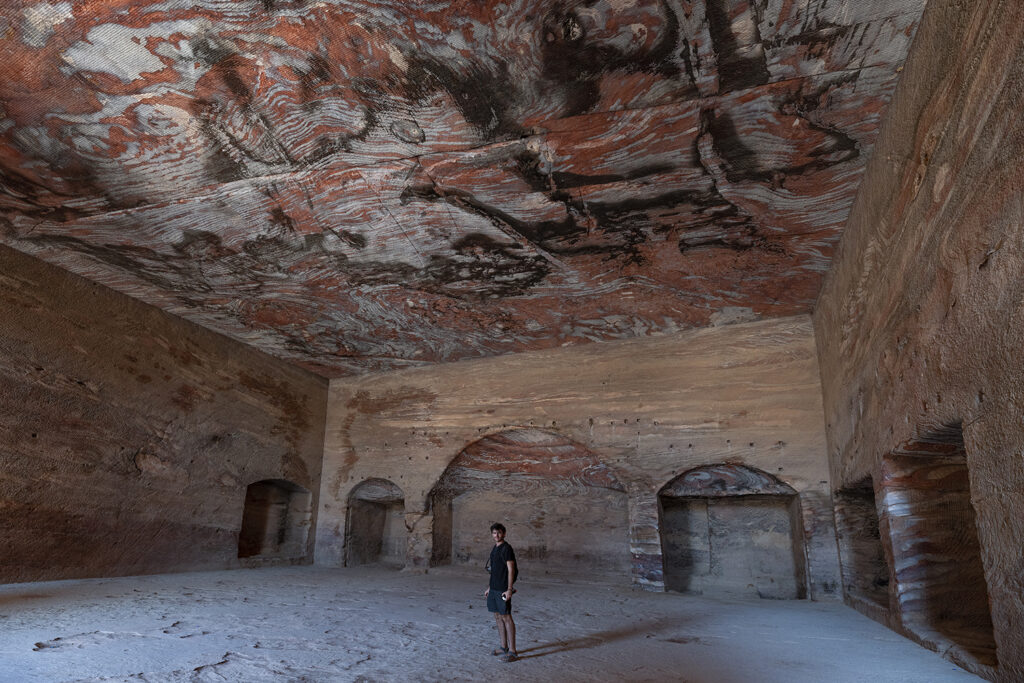
Although vendors and tourist trappings do their utmost to tarnish Petra, they fail. The place exudes a powerful sense of mystique and wonder that is impossible to overcome. One must be sympathetic; with tourist numbers and incomes down, any tourist is walking dollar sign.
The lowest place on earth
From Petra, we headed to the aptly named Dead Sea – at 430.5m below sea level, it is the lowest place on earth. With salinity levels 9.6 times higher than the ocean, nothing can live in it. But that doesn’t stop people from going in it…including me.
Our quintessential Dead Sea experience began at one of the resort hotels fringing the shoreline. Venturing slowly in, I found the water had an odd slimy feel. Floating on my back with arms and legs extended above water was downright bizarre! At one point, curiosity got the better of me and I had a taste. The salinity was staggering and made the ocean seem like fresh water. And my skin definitely felt smoother after rinsing off.
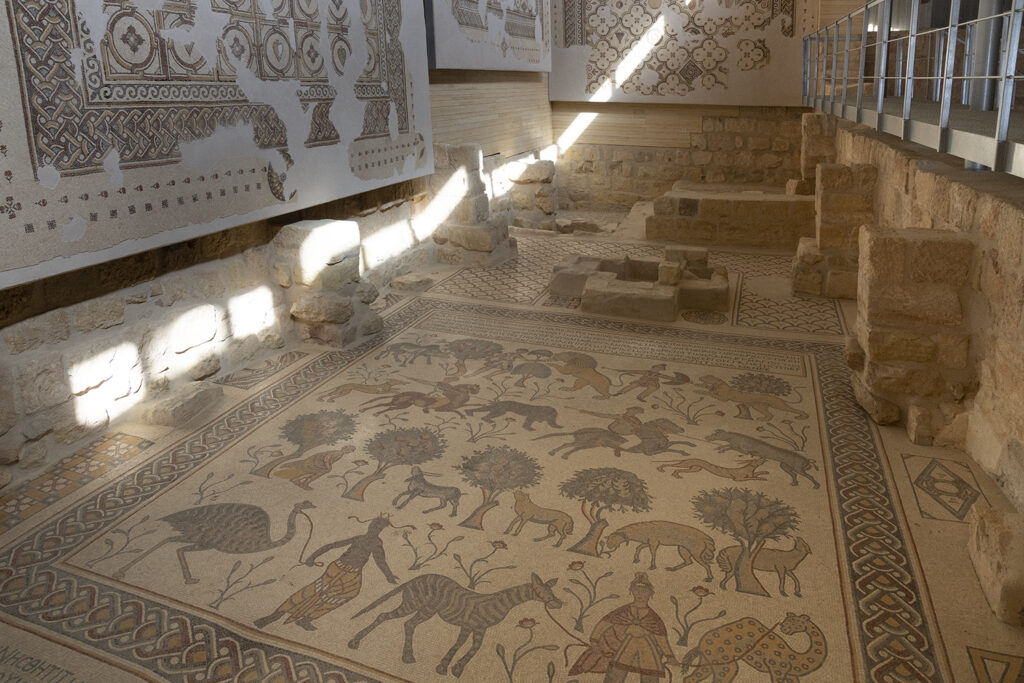
After a lunch, we continued to Mt Nebo, venerated as the site where Moses was granted a view of the Promised Land before his death. The viewpoint is marked by the Brazen Serpent Monument, a fusion of the serpent invoked by Moses and the cross on which Jesus was crucified. Sadly, the late-afternoon haze obscured the panoramic views, which can extend all the way to Jerusalem on a very clear day.
Opened in 2016, the Moses Memorial Church here was built over the remnants of a 4th-century Byzantine basilica, whose columns and mosaics can be viewed within. Even for the non-religious, the site radiates an aura that is quite humbling.
Bidding farewell
For our final day, we headed for Jerash, regarded as one of the largest and best-preserved Roman sites outside Italy. Dating from between the 1st and 2nd century, the city was a prosperous trading centre and, at its peak, home to 20,000 people. Arriving mid-morning on a Sunday, tourists were few and, once again, we felt like we had the site to ourselves.
Entering through the impressive arch of Hadrian’s Gate, our first stop was the Oval Plaza, a massive limestone expanse surrounded by 56 Ionic columns. Extending from it to the North Gate is the Cardo Maximus, the city’s main thoroughfare, still paved with original stones. Further along, an impressive staircase ascends to the Sanctuary of Artemis, dedicated to the city’s patron goddess. At the top, the temple platform is encircled by ten immense Corinthian columns and offers commanding views of the entire complex.
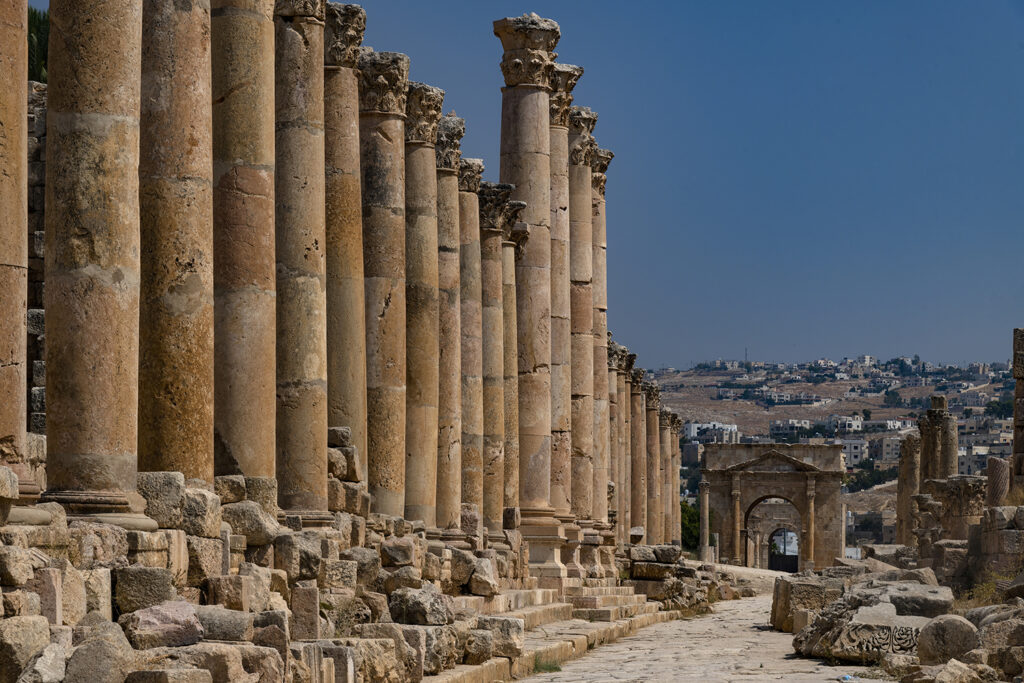
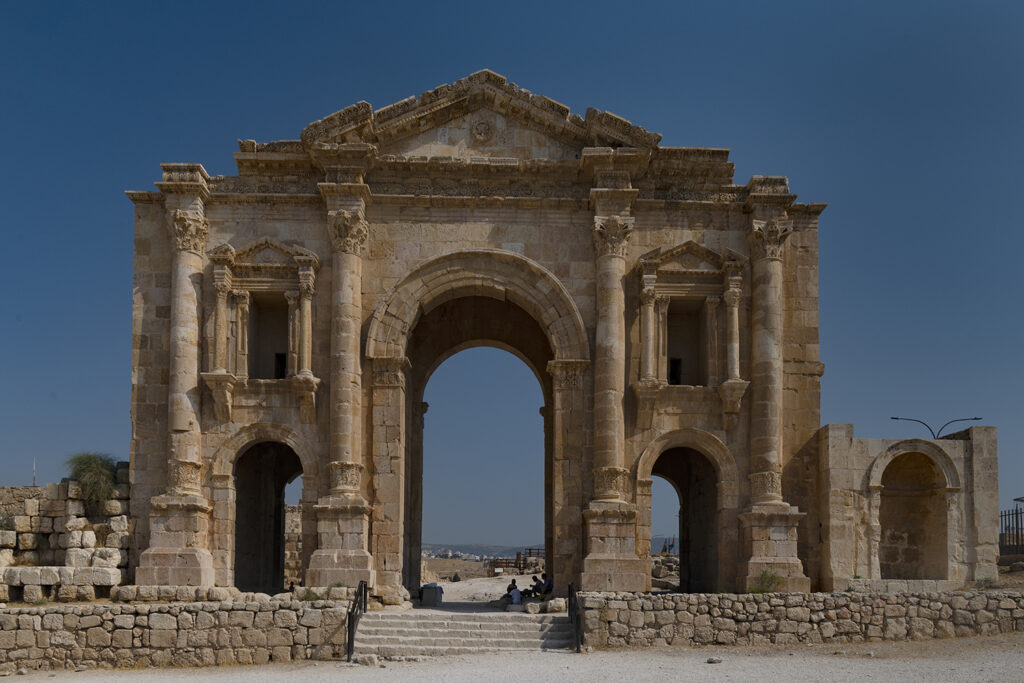
Overlooking the Oval Plaza, the Temple of Zeus sits adjacent to the impressive South Theatre, able to accommodate 5,000 spectators. Its renowned acoustics were demonstrated in an unlikely fashion by a Jordanian officer playing bagpipes!
As is the case with travel, all good things must come to an end. Between the history, food and especially the people, Jordan was simply extraordinary, and nine days wasn’t nearly enough time. One would be hard-pressed to say anything positive about Covid, but the resulting lack of tourists combined with the off-peak summer season allowed a unique and unforgettable experience. Seeing Jordan’s historic treasures without crowds was a real privilege and one likely never to be repeated. Go now, before the inevitable masses return.